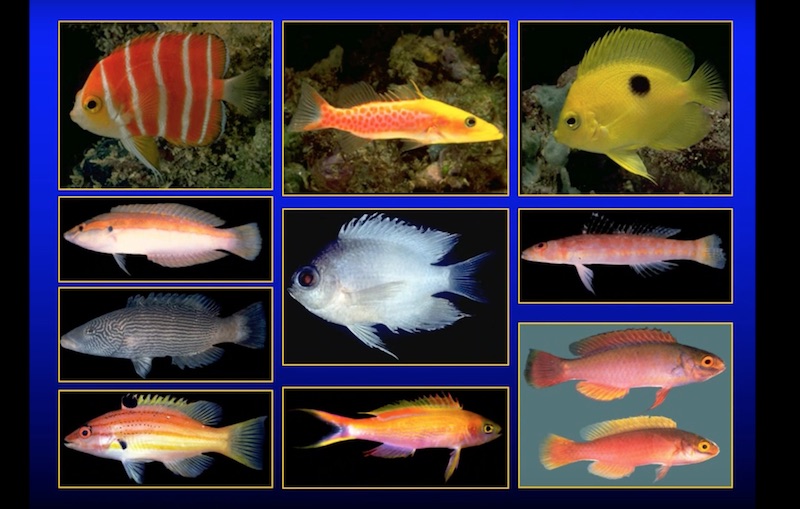Dr. Rich Pyle is one of the undisputed pioneers of deep reef fish species habitats, and biology. Over the last thirty years, Pyle has been exploring deep mesophotic reefs and discovering new species of reef fish in these habitats at an astounding rate.
Despite having found hundreds of deep living reef fish, Pyle and his contemporaries have noticed that the pattern of speciation for these mesophotic species doesn’t follow the same patterns of speciation of shallow reef fish species. The Coral Triangle is well known as the epicenter of coral, fish and reef life biodiversity, with fewer and fewer species being found outside of it.

Pyle began his deep dives in the South and West Pacific, well away from the Coral Triangle and it was his assumption that doing deep dives closer and closer to the Coral Triangle would yield proportionally higher numbers of new species of reef fish. Interestingly, this is not the case and deep living reef fish seem to be distributed about the same regardless of their proximity to the fabled Coral Triangle.
To help explain this discrepancy between the distribution of shallow and deep living reef fish species, Pyle has formulated the theory of Habitat Persistence Hypothesis. This theory posits that during global sea level changes, shallow water habitats are dried out, while deep water habitats can simply shift deeper.

This is especially noticeable at oceanic islands which have steep slopes, and no shelf habitats to support shallow water fish when sea level drops. The theory helps to explain why some oceanic islands have high rates of endemism in shallow water fish, while others do not, with the Hawaiian and Marquesas Islands being prime examples.
This talk presented by Dr. Pyle at the latest International Coral Reef Symposium is definitely the kind of lean forward mental fodder that is sure to stimulate your grey matter. Hopefully, with the Habitat Peristence Hypothesis researchers will better able to predict where shallow and deep living reef fish should be found.



